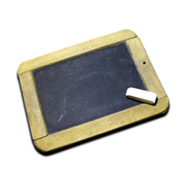Dropping -ms- Vendor Prefixes for IE10

But if you haven’t yet heard, many of these features will be supported in IE10 unprefixed. These include gradients, animations, transitions, and more.


But if you haven’t yet heard, many of these features will be supported in IE10 unprefixed. These include gradients, animations, transitions, and more.

Taking all the latest news into consideration, I summarize my thoughts on this subject in this post.

If web standards could talk, I think a lot of them would be humming that regularly.

Some navigation bars that I’ve seen are quite paradoxical in the click area they define. Look at the screen shot below showing the main nav bar for WebProNews.

True, we might change our prices in certain cases. For example, if we know we’re dealing with a high maintenance client, or we’re developing something for a non-profit.

Layout-wise, there’s nothing really all that different. It’s more of a different skin than anything, and (out of sheer laziness) the comments and footer area have pretty much remained the same. Basically, I got tired of the dull looking header/sidebar in the previous design and wanted something cleaner and with a little more color.

She says she finds all the stuff associated with front-end development to be quite overwhelming. Well, she’s not the only one. I think we all feel frustrated at the amount of reading and research that’s needed to keep up with things in the industry.

Somehow it was unanimously settled upon that the traditional manner of typesetting paragraphs — with indents and no spaces between paragraphs — is not as readable on a computer screen. In fact, the default styles applied by a browser on paragraph elements encourages the no-indent method. If you throw together an HTML document that doesn’t have any author styles defined, you’ll see the following when you inspect your paragraph elements in Chrome’s developer tools:

So recently, Web Designer contacted me to do a feature piece covering CSS3 techniques. The focus of the piece is CSS effects that, prior to CSS3, required the use of images or scripts. The feature (called “Master CSS Effects) was planned to have 30 CSS techniques, and I was responsible for covering 20 of them. I don’t know what the final count includes, as I haven’t yet seen the issue, but the magazines’s staff were responsible for any remaining tips. They also wrote the intro and conclusion.

I knew it had to be something centered around the ‘framework’ movement, mainly poking fun at the well-known HTML5 Boilerplate project. So on Tuesday night this week, I took the idea of HTML9 Responsive Boilerstrap JS from concept to creation. I finished it that night, including registering the domain, setting up the site, and gritclonemerging its own bogus repo.